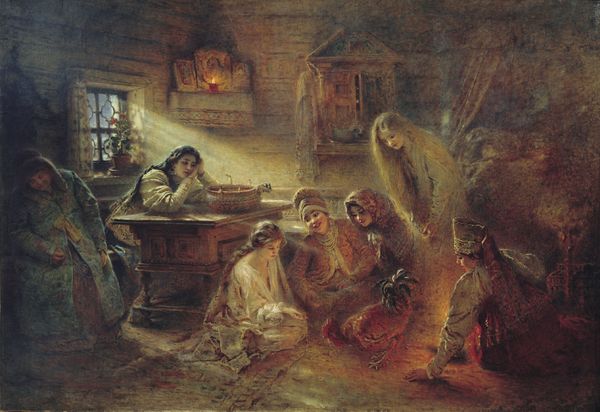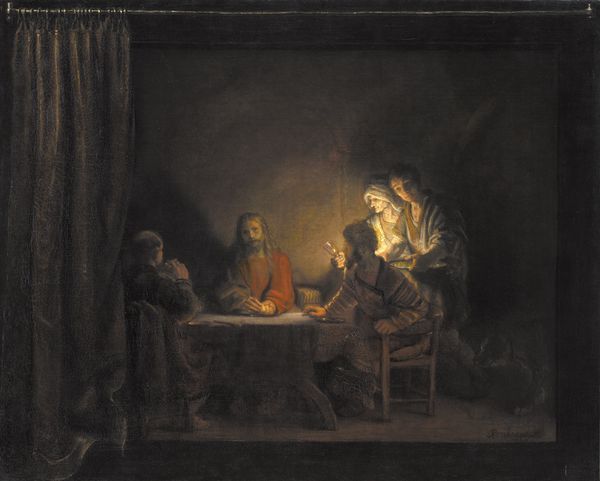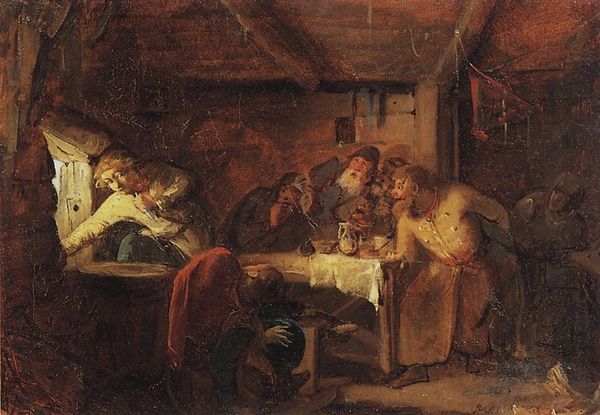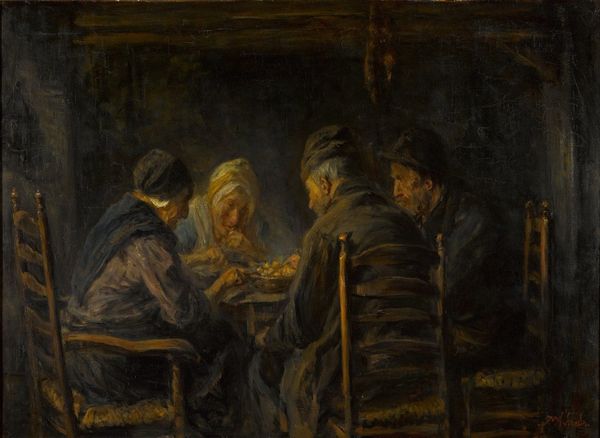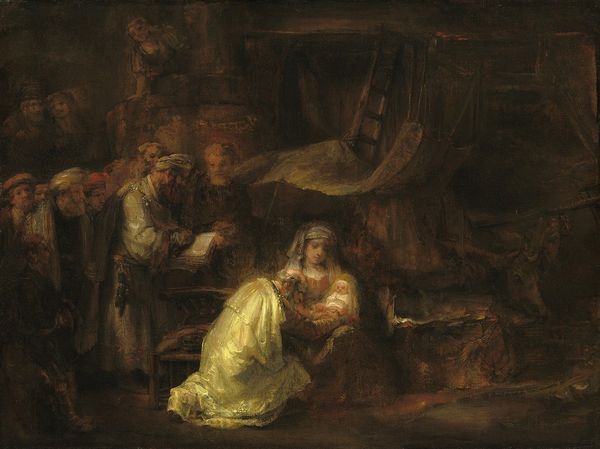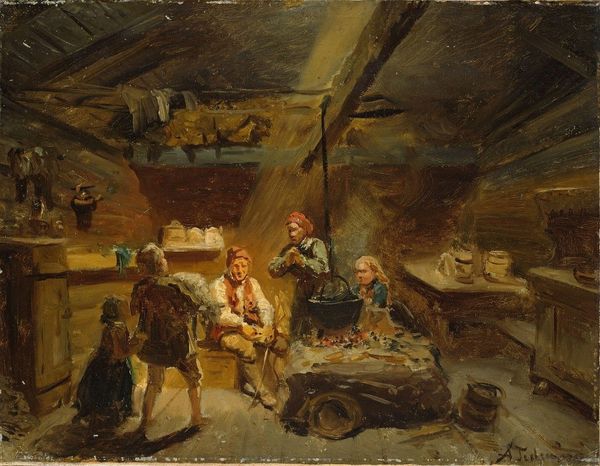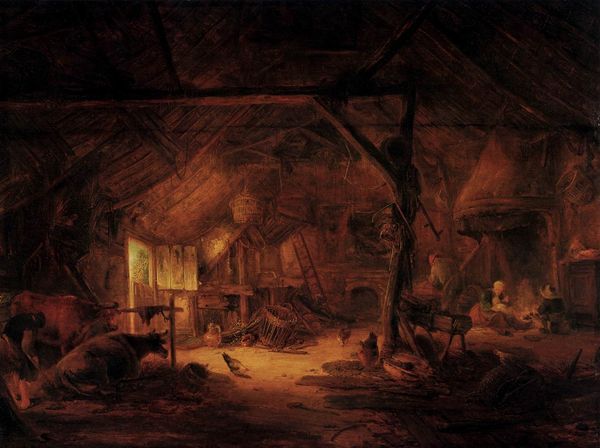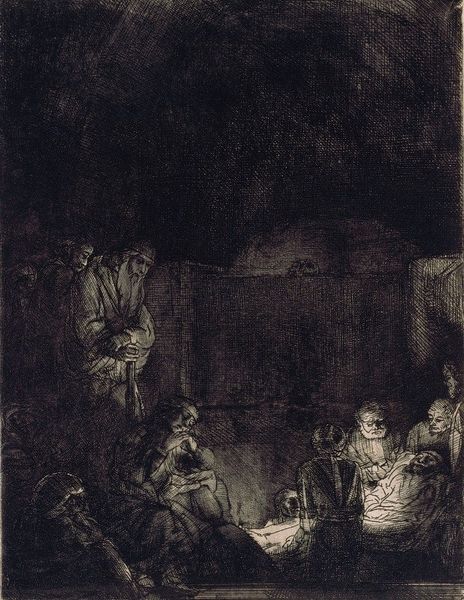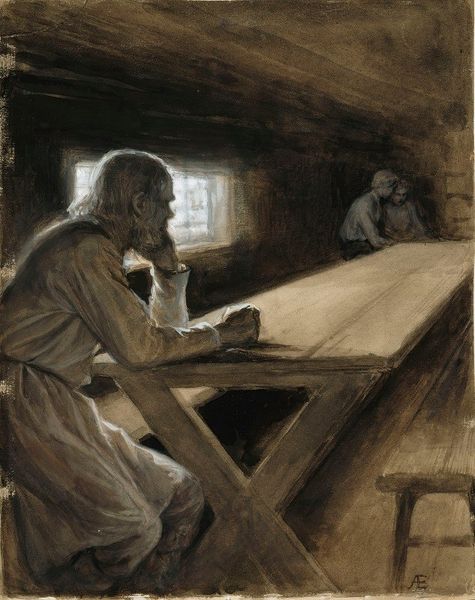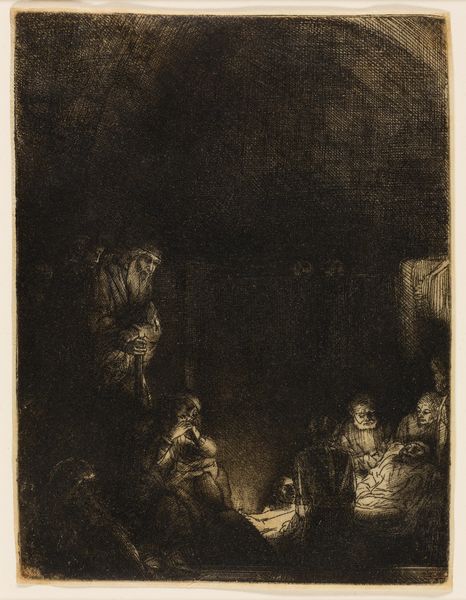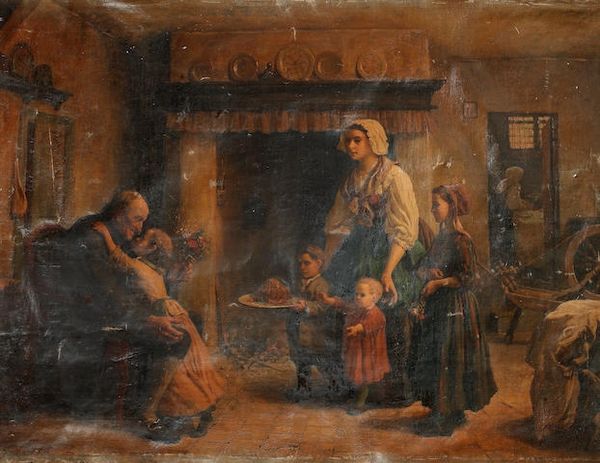
painting, oil-paint
#
narrative-art
#
baroque
#
dutch-golden-age
#
painting
#
oil-paint
#
charcoal drawing
#
figuration
#
oil painting
#
genre-painting
#
history-painting
Copyright: Public Domain: Artvee
Curator: Look closely at this oil painting, Philemon and Baucis, created around 1658 by Rembrandt van Rijn. Editor: Gosh, it's like stepping into a secret, dimly lit world. I immediately feel this quiet reverence, a sense of being an unseen observer in a very intimate scene. The dark hues envelop you, but the warm light – it draws you in. Curator: Rembrandt uses the baroque style’s tenebrism masterfully here, juxtaposing the dark background with illuminated figures, guiding our focus to the story unfolding. This relates to the broader artistic and economic shifts in the Dutch Golden Age. Genre painting was extremely popular and was created and sold on a mercantile basis, responding to the tastes of a new bourgeoise audience. Editor: Absolutely. You know, those brushstrokes… They are so thick and layered. I almost feel the texture of the scene—the rough-hewn table, the aged faces of the couple. It feels less about precise representation and more about conveying raw, human presence. Curator: The subject matter connects to Ovid's Metamorphoses. We are witnessing a scene of hospitality; Philemon and Baucis are unknowingly hosting Zeus and Hermes, who are disguised as poor travelers, showing how genre and narrative painting were often closely tied together. Rembrandt directs our attention to the reward of kindness. Consider the use of available goods and materials - oil paints made from locally available linseed oil, pigments from varied sources across Europe - to bring this allegorical story to life. Editor: I love that contrast you highlighted—humble ingredients telling a tale of divine visitation! I wonder what Rembrandt felt towards the story and toward the process of representing it. There’s something so universal about simple generosity and hospitality that resonates so strongly, centuries later, through layers of oil and canvas. The single flame is all it takes for divinity to shine. Curator: Indeed. Thinking about the production side, Rembrandt's workshop likely played a significant role. This suggests the influence of collective effort within artistic practices, challenging traditional notions of the artist as a solitary genius, but moreover reinforcing Rembrandt's skills in team building to scale up and fulfill merchant’s request. Editor: So much is hidden and so much is revealed within the constraints and confines of human kindness… It gives the picture a lingering power, well beyond just aesthetics or story. Curator: And also a sense of art and art making’s dependency to market. Fascinating to observe, all these dimensions contained in a single piece.
Comments
No comments
Be the first to comment and join the conversation on the ultimate creative platform.
